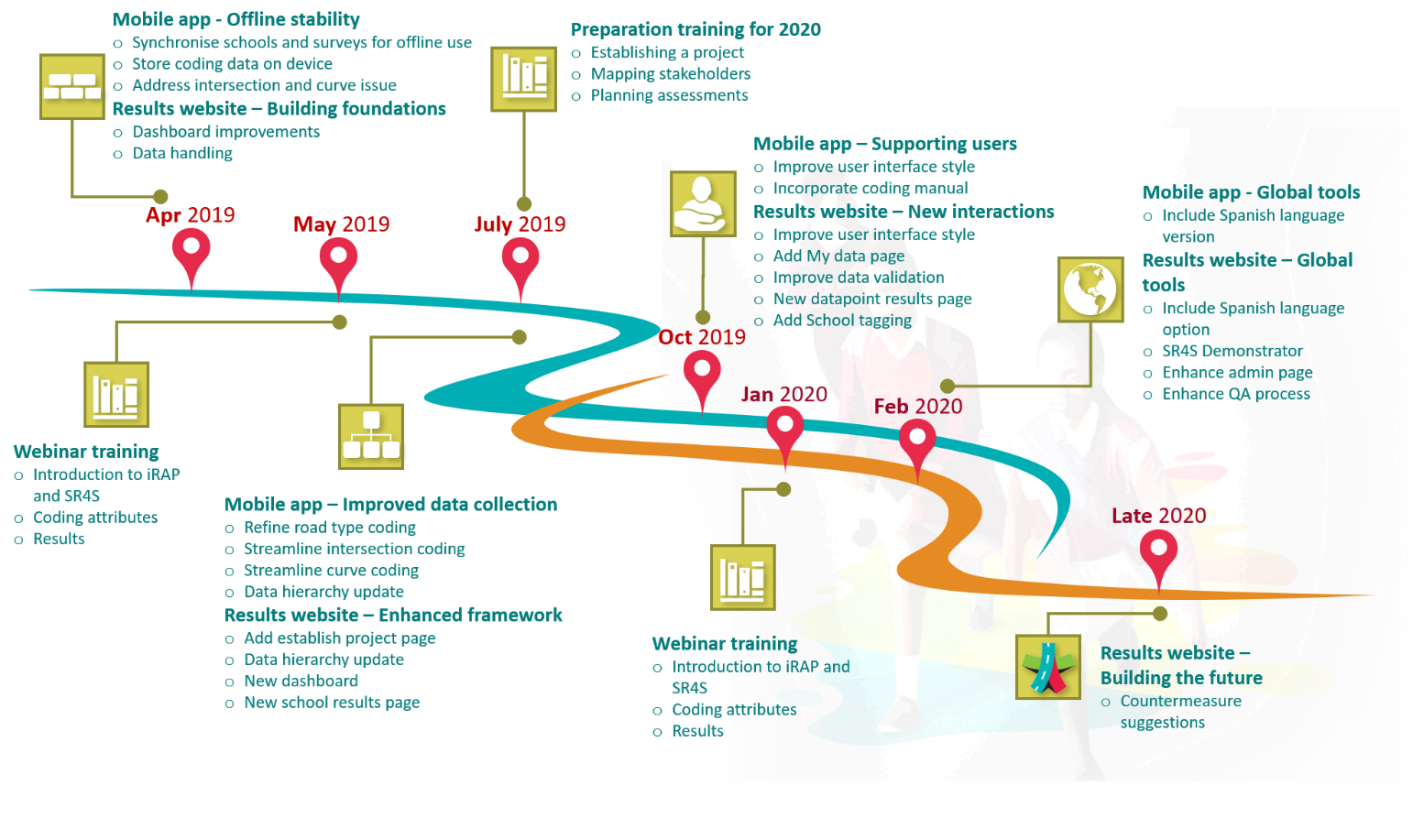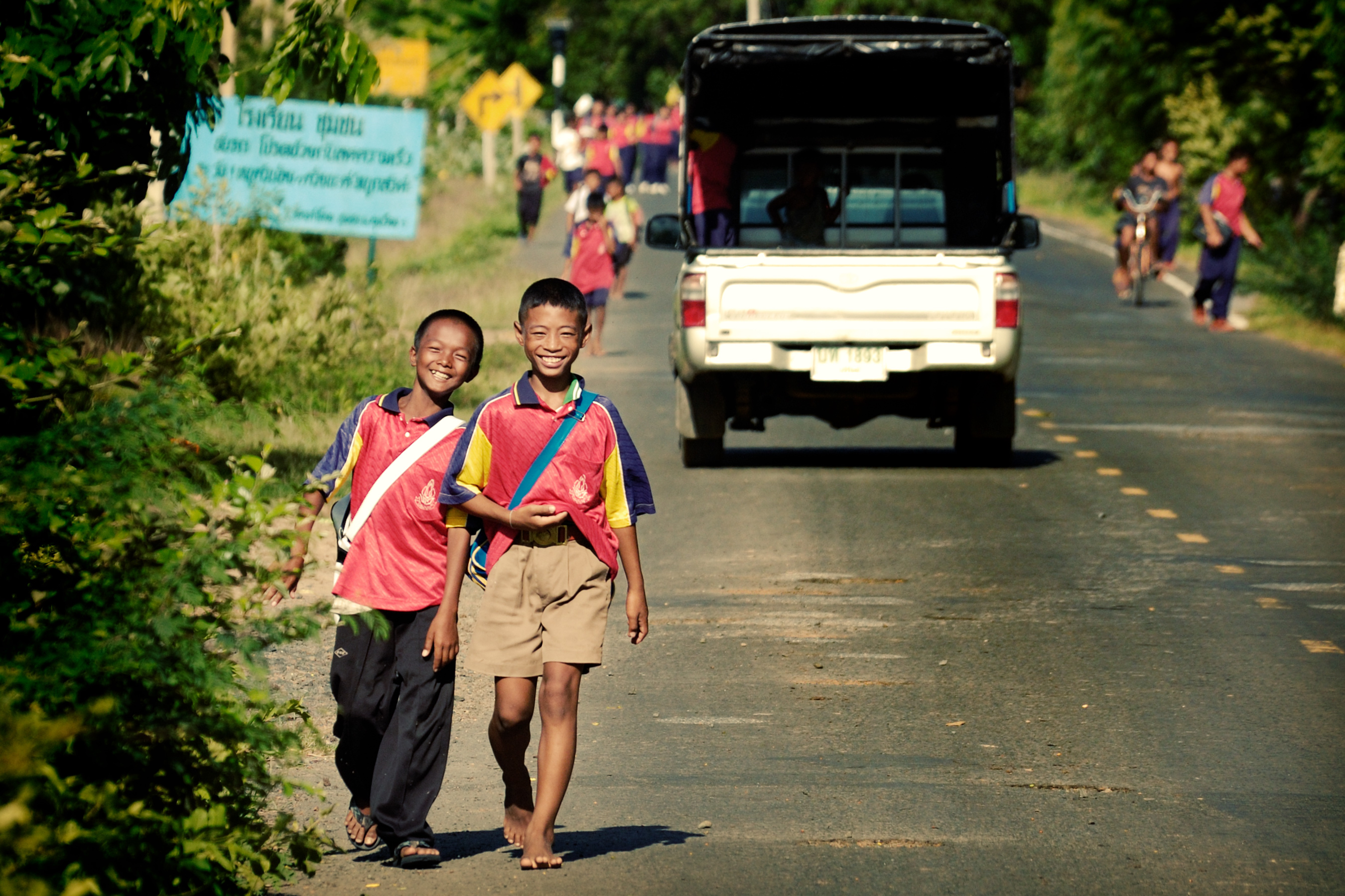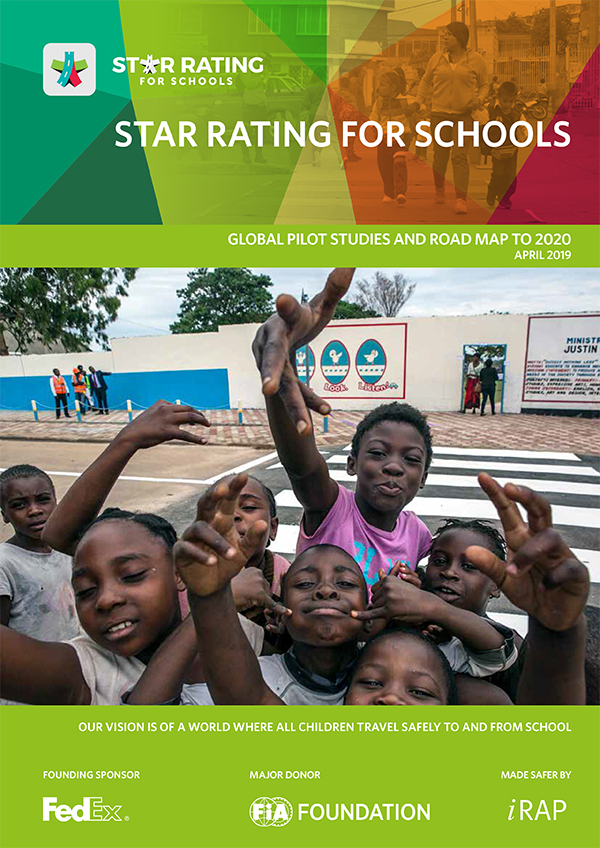Photo credit: Nicolas Zwarg
PHASE 1 OVERVIEW AND REPORT
In 2018, Lead Partners have undertaken pilot testing, repeatability and consistency studies and training activities as part of over 600 site assessments. Star Rating for Schools has been applied as a complementary tool to support the programmes already established by each of the lead partners. A summary of the history of the programme so far is provided in the newly released report “Star Ratings for Schools: Global Pilot Studies and Road Map to 2020”.
The assessments have been conducted by lead partners with two different purposes:
- to test the application to provide feedback and recommendations for improvements of the system; and
- to carry out pilot assessments to engage local authorities, advocate with the school community for road infrastructure improvements and support identification of design solutions.
Feedback during the pilot testing has confirmed the potential for the simple Star Rating of a School to measure the risk children are exposed to on their school journey, thus providing a powerful advocacy resource to inform and speed the implementation of countermeasures. The ability to immediately measure the before and after safety impact of interventions (or predicted impact) is valuable for decision makers, lead partners, the community, media and donors alike.
The pilot studies also identified a range of needs from the different NGO partners ranging from pure advocacy to technical assessment and detailed treatment optimisation. This requires a flexible approach to implementation and also the recognition that the current version of the SR4S app and website primarily meets the needs for a robust evidence-based technical assessment. Pure advocates can benefit from an even simpler introductory approach, while more detailed treatment optimisation needs may be best met using the full iRAP model, software and systems used by road owners and RAP partners worldwide.
ROAD MAP 2020 – APP, WEBSITE AND TRAINING
The inputs provided by the lead partners during the Pilot Phase 1 have been evaluated and will lead the application enhancements incorporated as part of the Pilot Phase 2. The Phase 2 rollout will see the completion of improvements to the mobile app and website as highlighted in Figure 1.

FIGURE 1: Road Map of development of SR4S
In 2019, lead partners and organisations already working with SR4S will immediately benefit from an improved version of the tool, addressing some of the main requests of lead partners during the pilot phase:
- ability to work offline;
- store coding data in the device;
- improvements to the website that will include enhancements to dashboard reporting and data handling that will facilitate future improvements planned during the year.
In May 2019, iRAP will offer the first webinar training to present the tool and build capacity on the data collection exercise. The training will be available by invitation only and will address the main technical needs identified during the pilot phase, from the selection of data points to the development of reports presenting the results.
In July 2019, a package of new features in the app and the website will be released to optimize data collection and refine the collection of some of the road attributes.
In October 2019, the styling of the website and the tool will be upgraded, to offer a clean and intuitive layout and help users to manage their data more easily.
In January 2020, a new webinar training will be offered to local organisations interested in getting ready to conduct their own assessments from February 2020 onwards. This training offer will be available to all the organisations that would like to participate and become certified users of the SR4S tool.
Finally, in February 2020 the tool will be globally launched. The system will also be available in the Spanish language and benefit from a new SR4S Demonstrator tool. The Quality Assurance process of data collected will also be enhanced.
Finally, in February 2020, following the completion of all priority software and system upgrades, the tool will be globally launched. The system will also be available in the Spanish language and benefit from a new SR4S Demonstrator tool. The Quality Assurance process of data collected will also be enhanced. In preparation for the launch in 2020, new partners are encouraged to:
- identify any existing school safety programmes in their areas of interest;
- determine any high-risk locations;
- commence engagement and discussions with the relevant stakeholders including the education authorities, road agencies and Lead Partners active in the area;
- identify funding sources for road improvements (agency budgets or donors) to ensure the high-risk sites are upgraded and journeys made safer for kids at the school;
- prepare for training and undertaking assessments in 2020.
Together we can save kids lives and ensure a safe journey to school for all children. Follow the SR4S journey at starratingforschools.org.


